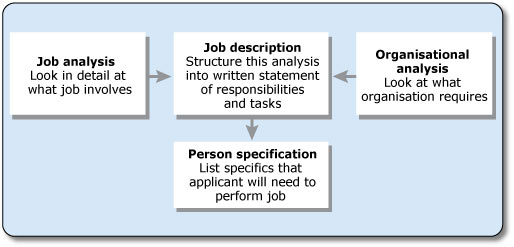4: Specifying job and person requirements
Initial assessment
To find the right person for the job, you need to have an accurate idea of the job itself and of the particular skills and attributes it demands. This can be carried out in a series of stages, as shown in Figure 1.
However, before – or indeed after – the job analysis you might consider whether the vacant job needs to be filled at all. Reallocation of work, internal promotion or temporary transfer could be used to cover the tasks associated with the vacancy. Ask yourself whether the job needs to be changed, updated or filled at all before going any further. An apparent vacancy provides a real opportunity to consider the way work is organised and the skills the organisation needs to secure its future success; you might wish to consider aspects of person-organisation fit to help develop the job.
Assuming you decide to go ahead and recruit to the existing or changed post, you now need to analyse exactly what the job entails.

